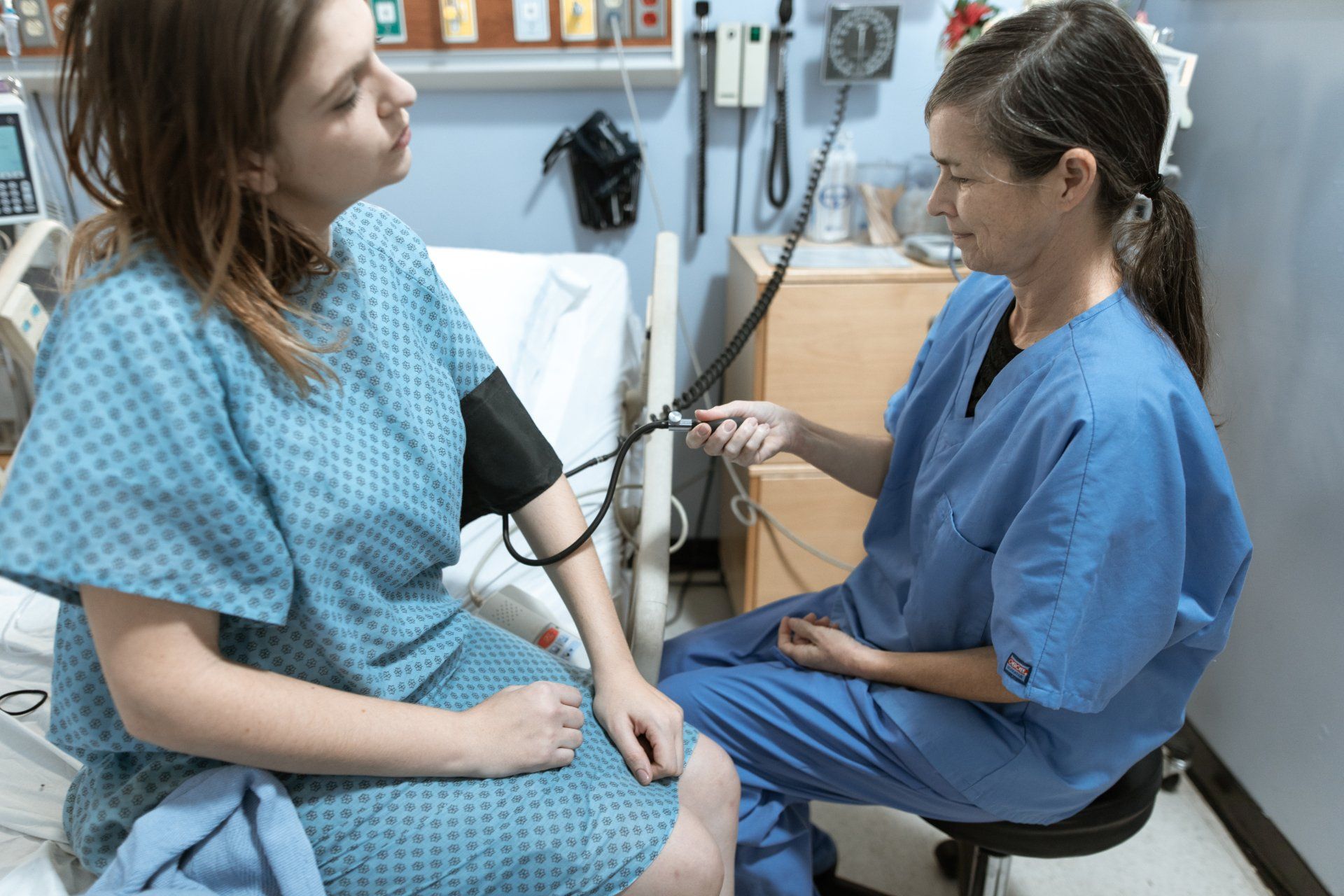Bell's Palsy

What is Bell’s palsy?
Bell’s palsy is a type of temporary facial paralysis that comes on suddenly, usually on only one side of the face.
The symptoms are caused by dysfunction of the seventh cranial nerve, which controls upper and lower facial muscles. This can cause difficulty with smiling, blinking or closing the eyes, or making normal facial movements. Symptoms usually begin suddenly over the course of several hours up to a few days, and most people recover fully within one to three months. Some severe cases experience long term muscle weakness.
The exact cause of Bell’s palsy is unknown.
Medications can help lessen the symptoms of Bell’s palsy but should be started within 72 hours of the onset of symptoms.
What are the Symptoms of Bell’s palsy?
Because the cranial nerve is very complex and carries nerve impulses to many parts of the face, symptoms can vary.
The most common symptom is sudden weakness on one side of the face. It can be accompanied with
- a slight fever
- pain near the ear or jaw
- inability to close the eye
- drooping of the mouth,
- drooling
It usually progresses rapidly over 48-72 hours and can range from mild weakness to total paralysis. Other symptoms may include:
- headaches
- loss of taste
- hyperacusis (increased sound sensitivity)
- decreased tear and saliva production
- abnormal sensations
Severe cases may present the following:
- affected nerves on both sides of the face
- fully paralyzed muscles
- complete inability to close the affected eye,
- dysfunction of the corneal reflex (meaning the eye does not close when touched)
Bell’s palsy symptoms sometimes begin following a period of stress in a person’s life. Stress can lead to reduced immunity, which is thought to trigger the condition.
What causes Bell’s palsy?
While the specific cause is unknown, patients with Bell’s palsy show swelling and inflammation of the seventh cranial nerve. This nerve passes through a narrow bone corridor and controls the muscles of the face. The swelling of the nerve in the tight space leads to reduced blood supply.
The condition has been linked to viruses, such as herpes simplex. Many scientists believe that dormant viruses in the body may reactivate during times of impaired immunity, which may be caused by
- stress
- illness
- autoimmune diseases
- physical trauma
- sleep deprivation
There may also be a possible genetic predisposition to Bell’s palsy.
What are the risk factors and complications?
Each year in the United States, 40,000 people are diagnosed with Bell’s palsy.
The condition affects males and females equally and it can happen at any age.
Certain conditions can increase the odds of developing Bell’s palsy:
- pregnancy (especially third trimester)
- diabetes, obesity
- hypertension (high blood pressure)
- upper respiratory illnesses
Recurrent attacks are uncommon and happen more often in people who have a family history of Bell’s palsy.
Most cases resolve within a month, but severe cases may lead to complications. These can include irreversible damage to the nerve and synkinesis (unwanted muscle contractions of the face). Other complications may arise from the inability to completely close and protect the eye, including cornea scratches or blindness.
How is Bell’s palsy diagnosed?
There are no specific tests available to diagnose Bell’s palsy, but some tests can be used to rule out other conditions.
A physician will examine the individual by looking at the face and asking the patient to perform movements such as lifting the brow, smiling, closing eyes, or showing teeth.
A test called electromyography may be used. This measures the electrical conductivity of the nerve to assess the damage.
Imaging, such as CT scans or MRIs may be ordered to rule out other causes, like fractures or tumors.
Blood tests may be ordered to rule out Lyme disease or other infections that may cause similar symptoms.
What treatments are available?
Most patients recover completely without any treatment. There is no one size fits all treatment; it will look different for each patient. Treatment options can include:
- Medication:
- Oral steroid drugs, such as prednisone, have been shown to be very successful, especially if started within 72 hours of onset of symptoms. This can increase the probability of fully restoring the function of the nerve..
- Antiviral medications have been used, but their benefits have not been fully established.
- Pain-relieving medications, like ibuprofen or acetaminophen, may help reduce pain levels.
- Botulinum toxin (Botox) can reduce muscle overactivity.
- Physical therapy:
- Facial massage can help the muscles maintain mobility and nerve function.
- Physical therapy exercises can work the muscles and prevent them from shortening and tightening as they heal.
- Surgery:
- Surgical options, where damaged nerves are connected to healthy nerves, are also available, but doctors suggest conservative measures be taken first.
- In rare and severe cases, plastic surgery may be used. This can help correct lasting nerve issues, help reanimate the face, and sometimes even restore movement.
- Support: Counseling or support groups can help patients deal with anxiety or feelings of social isolation. A physician’s office will have contact information for these groups.
- For eye damage that results from Bell’s palsy, there are many treatments available. These include
- eye drops
- goggles
- taping of the eye for protection
What is the prognosis for Bell’s palsy?
The prognosis is usually positive, with improvement seen within weeks in the majority of cases. Most individuals are able to regain full facial function, though some may continue to experience facial weakness.
Summary
Bell’s palsy is a rare condition that causes temporary facial paralysis. It may have viral or genetic origins, and possibly be brought on by increased stress. Symptoms vary widely, but all include facial weakness. If medical care is sought quickly, the outcome is usually positive.
The National Institute of Neurological Disorders and Stroke (NINDS) is currently studying the circumstances and conditions that lead to nerve damage. Scientists and researchers are also looking into genes that may be involved. More information about research and funding may be found here.
References:
https://rarediseases.org/rare-diseases/bells-palsy/
https://www.mayoclinic.org/diseases-conditions/bells-palsy/symptoms-causes/syc-20370028
https://www.ninds.nih.gov/bells-palsy-fact-sheet
https://pubmed.ncbi.nlm.nih.gov/12218634/
https://www.nature.com/articles/s41598-021-82736-w
https://www.sciencedirect.com/science/article/pii/S1568997212001152
Courtney Southwick is a freelance writer focusing on health, nutrition, and disease. She holds a Master of Science in Health Science and has been writing since she was a child. She is available for freelance writing assignments.
Visit her at CourtneySouthwick.com or on
LinkedIn.
Thank you for reading the Write Shift RN blog.
Disclaimer: This article was written as a guest post for Write Shift RN LLC's blog. The information in it may not be wholly fact-checked or edited, allowing the reader to see the writer's work and skills firsthand. This information is not intended as medical advice. It is for informational and educational purposes only. Always talk to your doctor or other qualified healthcare providers about any questions or concerns you may have regarding medical conditions.











